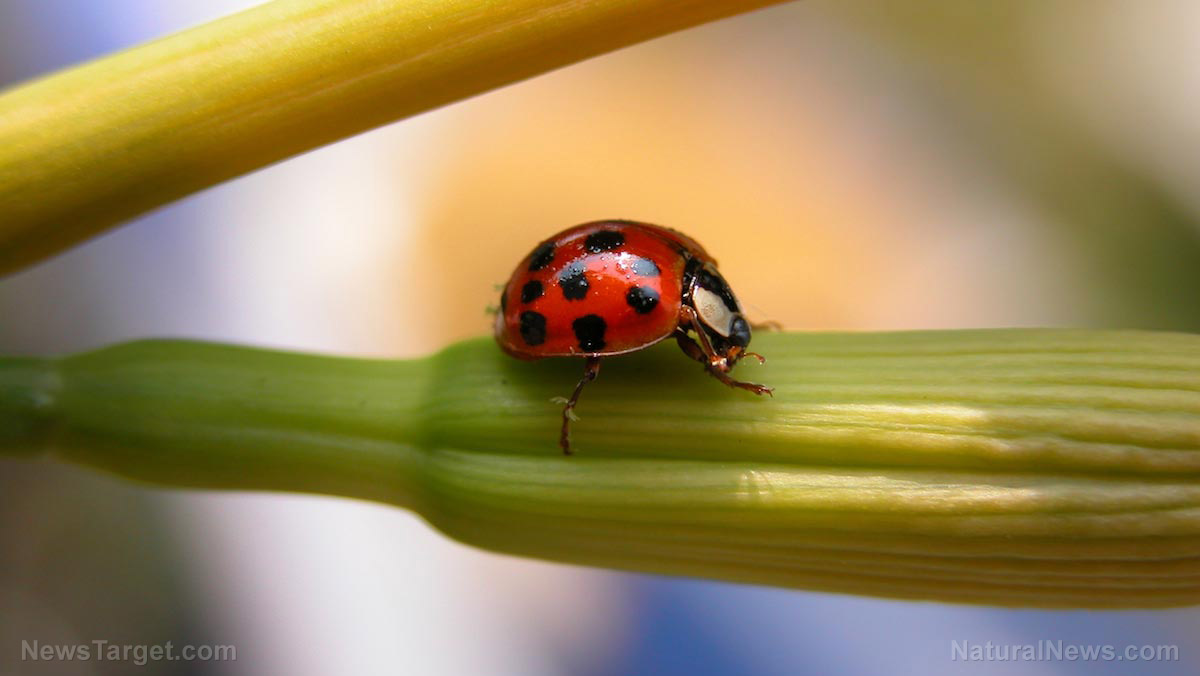
Advertisement
If your garden is crawling with some nasty insects, don’t instinctively reach for toxic pesticides and insecticides. Instead, turn your attention to some of nature’s best pest control agents: other bugs.
Not all insects are bad pests. There are plenty of beneficial insects that can provide your garden with a long-term sustainable solution to its pest problems. These beneficial insects will prey on other bugs that can ruin your garden.
Nature’s pest control solution
Switching out your toxic pesticides in favor of attracting beneficial bugs to your garden can provide you with several benefits, such as saving you a lot of money, feeding on decomposing material, helping your plants pollinate and, of course, preying on and controlling the population of harmful bugs in your garden.
Some garden pests have to go. But, if you spot one or several of these 10 beneficial bugs in your garden, know that they aren’t there to hurt your crops, but they can actually help you garden flourish. In fact, it’s in your best interests to attract them. Here are 10 beneficial bugs, what pests they can keep away and how you can bring them to your yard.
Minute pirate bug
Minute pirate bugs of the Anthocoridae family are fond of feeding on spider mites, insect eggs, caterpillars, aphids and thrips. They are often released into greenhouses to deal with mites and thrips. Be warned that both immature and adult pirate bugs are not very picky about which bugs they eat.
Pirate bugs can be attracted by alfalfa, caraway, fennel, spearmint and “peter pan” goldenrod.
Braconid wasp
Braconid wasps can kill the tobacco hornworm, the tomato hornworm, aphids and caterpillars. These good bugs do this by laying their eggs on these bugs. These larvae then eat out their host alive and by the time they are fully grown, the host is dead. A single female braconid wasp can lay anywhere from fifty to four hundred eggs at one time.
Braconid wasps are attracted by common and fern-leaf yarrows, dill, parsley and lemon balm.
Praying mantis
Praying mantises are large, predatory bugs that can deal with a wide range of insects including moths, gnats, crickets, caterpillars and beetles.
Having tall grass or shrubs in your garden can attract them. If not, use marigolds, dills and Cosmos.
Ladybug
The beautiful ladybug is probably one of the most well-known beneficial bug that you can get your hands on. Its larvae are not harmful to plants and they can eat between fifty to sixty aphids per day and more than 5,000 during their lifetime. They can also eat whitefly, mites, fleas and the Colorado potato beetle.
Dill and fennel are great at attracting ladybugs, as well as dandelions, fern-leaf and common yarrow and basket of gold.
Green lacewing
These beautiful and nocturnal bugs are great at getting rid of aphids in your garden. The female lacewings lay their eggs among aphids so that their young have an abundant food supply. They can also get rid of whiteflies, leafhoppers, mealybugs and caterpillars.
Attract green lacewings to your garden with some dill, dandelion, coriander, golden marguerite and Angelica.
Tachinid fly
Tachinid flies, much like the braconid wasps, lay their eggs on “bad bugs” in your garden, such as gypsy moths, Japanese beetles, cutworms and squash bugs. Not only will the tachinid larvae kill these bad bugs, but they will also help pollinate your garden.
These flies can be attracted to your garden with some dill, coriander, buckwheat, cilantro and carrots.
Damsel bug
The damsel bugs in the Nabidae family can effectively deal with your garden’s population of potato beetles, cabbage worms, caterpillars, mites and aphids.
They can be easily attracted to your garden with caraway, fennel, alfalfa, “peter pan” goldenrod and spearmint.
Mealybug destroyer
As their name suggests, the mealybug destroyer goes after many species of mealybugs. One destroyer can consume up to 250 mealybug larvae.
Attract the destroyers to your garden with dill, fennel, sunflower, goldenrod and Angelica.
Ground beetle
There are over 2,500 different species of this nocturnal predator. Some of the bugs they can help you deal with are slugs, ants, caterpillars, cutworms, cabbage maggots and the Colorado potato beetle. They are very gluttonous predators, too. One ground beetle larva can consume up to fifty caterpillars.
Ground beetles are attracted to evening primrose, clover and amaranth.
Spider
Spiders may be some of the best critters that you can bring to your garden. They eat a wide range of bad bugs such as cockroaches, wasps, mosquitoes, fruit flies, grasshoppers, aphids and even bed bugs.
Weaving spiders need tall plants, such as corn, where they can spin their webs. Other spiders require places where they can cover themselves up and lie in wait for their prey.
Once you’ve attracted a sufficient number of your chosen beneficial insects to your garden, remember to be patient, as it will take time for the good bugs to produce results. Wait for several days to a few weeks. Play your part by giving these bugs a healthy habitat to live in and to co-exist with your garden.
Sources:
Advertisements







